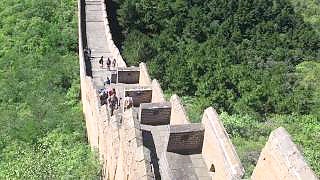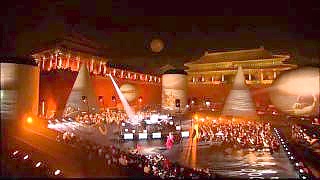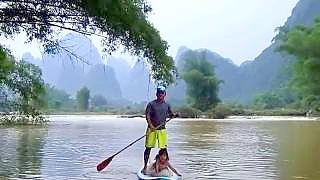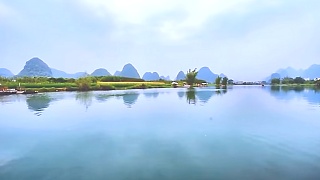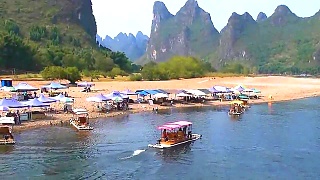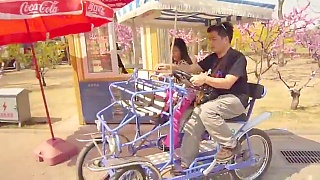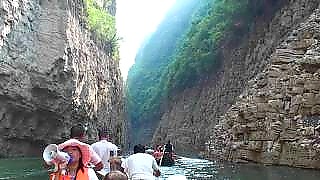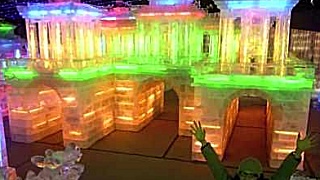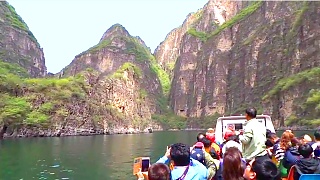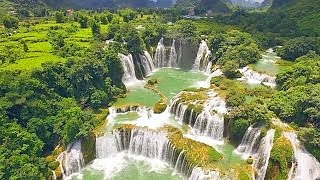LongQing Xia (龙庆峡) Visitor Guide - BeiJing
Overview
LongQing Xia, also known as the LongQing Gorge or Dragon Celebration Gorge, is a stunning scenic area located in the YanQing District of BeiJing, China. Famous for its breathtaking natural scenery, clear waters, and dramatic cliffs, LongQing Xia is a popular destination for both locals and tourists seeking a peaceful retreat from the bustling city.
Getting There
Location: YanQing District, BeiJing, China.
Public Transport:
- By Bus: Take Bus 919 or 880 from Deshengmen Bus Station to YanQing. From YanQing, transfer to Bus 875 to LongQing Xia.
- By Train: Take the S2 train from Huangtudian Railway Station to YanQing Station. From there, take a taxi or local bus to LongQing Xia.
Opening Hours
- April to October: 7:30 AM to 4:30 PM
- November to March: 8:00 AM to 5:00 PM
Tickets
- Entrance Fee: ¥40
- Boat Ride: ¥100 (optional)
- Discounted Ticket (for children, students, and seniors): ¥20
Main Attractions
LongQing Xia offers a variety of attractions for visitors to explore:
- Ice Lantern Festival: Held every winter, the festival features beautiful ice sculptures and colorful lanterns, creating a magical winter wonderland.
- LongQing Gorge: The main attraction, this gorge offers stunning views of the cliffs and clear waters, best experienced by boat.
- Bailong Cave: A cave with impressive stalactites and stalagmites, offering a cool retreat during the summer months.
- Jiguanshan Great Wall: A lesser-known section of the Great Wall, offering a historical and scenic hike.
- Rainbow Bridge: A picturesque bridge offering great photo opportunities and scenic views of the gorge.
Activities
Visitors can engage in various activities at LongQing Xia:
- Boat Rides: Take a boat ride through the gorge to fully appreciate the stunning scenery.
- Bungee Jumping: For the adventurous, there is a bungee jumping platform offering a thrilling experience.
- Hiking: Explore the trails around the gorge and the Great Wall for a more active visit.
- Photography: Capture the beautiful landscapes and unique features of the area.
- Ice Sculptures (winter): Visit during the winter months to see the incredible ice sculptures of the Ice Lantern Festival.
Dining and Refreshments
Several restaurants and snack stalls are available around LongQing Xia, offering a variety of Chinese cuisine and refreshments. It is also advisable to bring your own snacks and water, especially if you plan on hiking or exploring for an extended period.
Visitor Tips
- Best Time to Visit: Spring and autumn are the best times to visit due to the pleasant weather and beautiful scenery. Winter is also popular for the Ice Lantern Festival.
- Wear Comfortable Shoes: The area has many trails and uneven terrain, so comfortable walking shoes are recommended.
- Stay Hydrated: Bring plenty of water, especially if you plan on hiking.
- Prepare for Weather: Bring a raincoat or umbrella during the rainy season, and dress in layers for temperature changes.
- Respect Nature: Follow park rules, stay on designated paths, and do not disturb the wildlife.
Nearby Attractions
- Badaling Great Wall: One of the most famous sections of the Great Wall, located nearby and offering a great historical experience.
- Yudu Mountain: A beautiful mountain area offering hiking trails and stunning views.
- Kangxi Grassland: A vast grassland ideal for horse riding, picnicking, and enjoying the natural scenery.
Conclusion
LongQing Xia (龙庆峡) in BeiJing is a breathtaking natural destination that offers a mix of stunning landscapes, adventurous activities, and cultural experiences. Whether you're a nature enthusiast, thrill-seeker, or simply looking for a peaceful retreat, LongQing Xia provides an unforgettable experience.
Beijing, the capital city of China, is a vibrant metropolis steeped in history, culture, and modernity. Here's a brief overview of what you can expect as a tourist in Beijing:
Historical Landmarks:
The Great Wall of China: One of the most iconic structures in the world, the Great Wall is easily accessible from Beijing. Mutianyu and Badaling sections are popular among tourists.
Forbidden City (Palace Museum): A UNESCO World Heritage Site, this vast imperial palace complex was home to Chinese emperors for over 500 years. It houses numerous halls, courtyards, and historical artifacts.
Temple of Heaven: A masterpiece of Chinese architecture, this ancient temple complex served as a place of worship for emperors to pray for good harvests.
Summer Palace: A stunning ensemble of lakes, gardens, and palaces, the Summer Palace served as a retreat for emperors during the Qing dynasty.
Tiananmen Square: One of the largest city squares in the world, Tiananmen Square is flanked by important landmarks such as the Monument to the People's Heroes, the Great Hall of the People, and the Mausoleum of Mao Zedong.
Cultural Sites:
Beijing Hutongs: Explore the narrow alleyways and traditional courtyard residences of Beijing's historic neighborhoods. You can take a rickshaw tour or simply wander around on foot.
Beijing Opera: Experience traditional Chinese opera performances at venues like the Liyuan Theater or the Chang'an Grand Theatre.
798 Art District: A hub of contemporary art and culture, this former industrial area is now home to numerous galleries, studios, and cafes.
Modern Attractions:
Olympic Park: Visit iconic structures such as the Bird's Nest (National Stadium) and the Water Cube (National Aquatics Center) from the 2008 Beijing Olympics.
CBD (Central Business District): Marvel at the futuristic skyline of Beijing's modern business district, which includes landmarks like the CCTV Headquarters and the China World Trade Center Tower III.
Culinary Delights:
Peking Duck: Indulge in Beijing's most famous dish, crispy roast duck served with pancakes, scallions, and hoisin sauce.
Street Food: Explore the city's vibrant street food scene and sample local delicacies like jianbing (savory crepes), lamb skewers, and dumplings.
Practical Tips:
Transportation: Beijing has an extensive public transportation system, including the subway, buses, and taxis. However, traffic can be heavy, so plan your travels accordingly.
Language: While English is not widely spoken, especially outside tourist areas, many signs and transportation announcements are in English. It's helpful to carry a translation app or a phrasebook.
Weather: Beijing experiences four distinct seasons, with hot summers and cold winters. The best times to visit are spring (April to June) and autumn (September to October) when the weather is mild and comfortable.
Etiquette: Respect local customs and traditions, such as removing your shoes before entering someone's home and using both hands to pass or receive items.
Beijing offers a rich tapestry of experiences for tourists, blending ancient heritage with modern innovations. Whether you're fascinated by history, culture, or culinary delights, there's something for everyone in this dynamic city.
 LongQing Xia 龙庆峡 (LongQing Gorge), BeiJing
LongQing Xia 龙庆峡 (LongQing Gorge), BeiJing